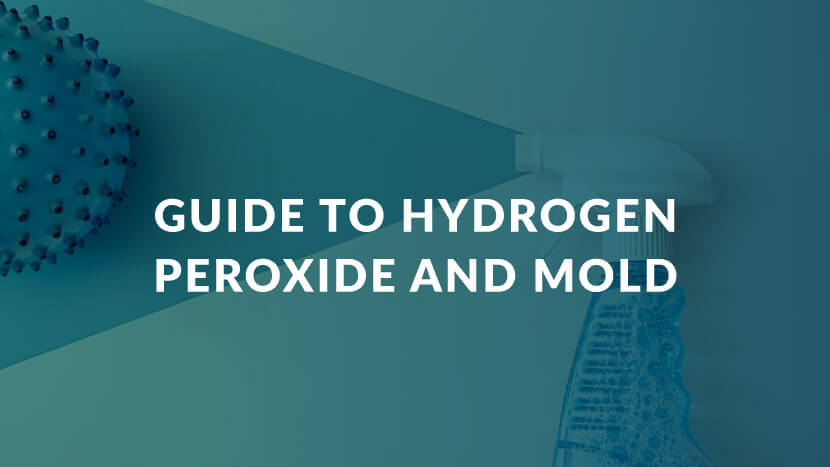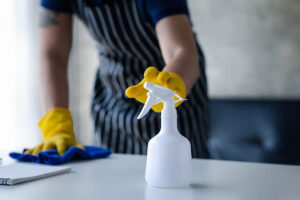
When mold takes hold in your home, it can spread quickly, releasing spores that could cause a whole host of health complications and structural risks to your home. Mold can eat away at the structural integrity of your home, leading to costly repairs if not addressed promptly.
Many homeowners resort to DIY methods to combat mold in their homes, such as using white vinegar or bleach—however, many question whether hydrogen peroxide can combat mold. CLEAR Restoration is here to clear the air and reveal hydrogen peroxide’s role in mold elimination.
[Related: Structural Damage of Mold]
Why Mold is a Problem and Why it Needs to Be Addressed Immediately

Before we get into hydrogen peroxide’s role in mold remediation, it is important to understand why mold sparks fear in many property owners. Mold presents health risks, such as intense and increased allergic reactions and respiratory issues. Also, mold can weaken the integrity of a building over time, which could lead to extensive damage.
Mold needs to be addressed immediately to protect your health and the structural integrity of your building. Typically, when mold covers an area of less than 10 square feet, you can tackle it with some do-it-yourself methods. However, if the infestation is larger, it’s time to call in the professionals, like CLEAR Restoration, to ensure the job is done safely and effectively.
Can You Use Hydrogen Peroxide to Combat Mold?
One of the DIY methods for mold removal involves the use of hydrogen peroxide, a common household disinfectant known for its oxidizing properties. Hydrogen peroxide has the potential to kill mold spores, making it an effective tool in your mold-fighting arsenal. It can be used safely on various non-porous surfaces, including counters, tabletops, glass, walls, and in your shower, to eliminate mold and prevent its return.
However, it’s important to note that hydrogen peroxide is not suitable for all materials. Porous surfaces like fabrics and wood can be damaged by hydrogen peroxide, and it may bleach certain natural fabrics, such as wool. Therefore, it’s essential to test it on a small, inconspicuous area before applying it to a larger surface.
How to Use Hydrogen Peroxide to Eliminate Mold Effectively
Now that you know that hydrogen peroxide can combat mold, how do you use it? Here is a step-by-step process to use hydrogen peroxide for mold elimination:
- Pour 3% hydrogen peroxide into a spray bottle.
- Spray it generously onto the moldy surface, ensuring full coverage.
- Allow the solution to sit for about 10 minutes to penetrate and kill the mold spores.
- Scrub the area with a rag or soft brush to remove the mold.
- Wipe the surface dry with a clean cloth or rag after scrubbing to prevent moisture from lingering.

Hydrogen Peroxide and Mold: Prevention
While hydrogen peroxide is a valuable tool for mold removal, prevention is always better than cure. To keep mold at bay:
- Reduce moisture and humidity in your home by using dehumidifiers and ensuring proper ventilation.
- Address water leaks and spills immediately to prevent mold from taking root.
- Maintain a routine cleaning schedule, paying special attention to bathrooms, kitchens, and other areas prone to moisture.
[Related: How to Prevent Mold in Your Home]
Contact CLEAR Restoration for Mold Abatement Services
Despite our best efforts to prevent mold, it can still creep into our lives and disrupt our healthy and harmonious homes. When you have an extensive mold problem or when hydrogen peroxide can’t cut it, call CLEAR Restoration. We have the experience and expertise to get rid of mold so it doesn’t disrupt your life again. Call us today at 225-245-3575 when you want to reclaim your space from mold and restore your peace of mind.



